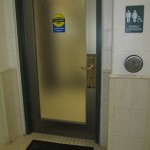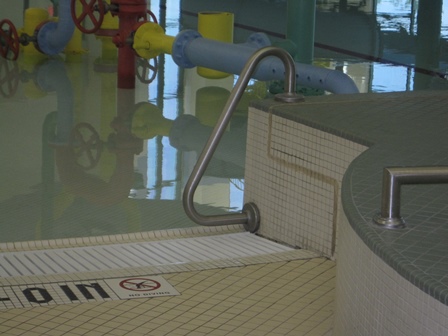How about you?
Is ADA a Part of your Life?
My parents, teachers and culture taught me to blend in, not cause trouble and certainly never ever draw attention to myself. That all changed when my son Aaron was born with autism and developmental disabilities. Aaron couldn’t speak for himself, mom had to do it. HAD TO–not something I chose or wanted to do.
Advocacy (speaking for others) is learned–the same way we learn to run a race, or learn to read. Advocacy takes much practice and the trial-and-error of many mistakes and some successes.
So as the parent of a person with disabilities I learned to ask questions, read, research, go to workshops and meetings, meet with like-minded parents and professionals AND with people who were 180 degrees opposed to ideas like normalization, inclusion and civil rights for people with disabilities. I learned about making change with Bronfenbrenner’s embedded systems: individual, local, state, national and world.
I learned to work with other parents, adults with disabilities and advocates. Our big successes were keeping IDEA alive when Pres. Reagan was trying to repeal it and helping pass the civil rights legislation: The Americans with Disabilities Act (ADA).
This month ADA celebrates its 23rd birthday. We have accomplished much. But there is still much to do:
The Arc and other advocacy organizations are trying to get the US to adopt the United Nations Resolution (this is just embarrassing for the US).
Almost on the anniversary of ADA, the justice department in Florida sues over children being forced to live in nursing homes.
A young woman with Down syndrome just won a lawsuit over her guardianship.
And in Africa, there is a course for people with disabilities on how to be effective beggars. Yep, couldn’t make this up.
The Power of One
There is only one way to keep moving forward with civil rights—each of us has to make sure the law is enforced and vulnerable people have the same opportunities as others. One person. One situation at a time.
I am only one, but still I am one. I cannot do everything, but still I can do something; and because I cannot do everything, I will not refuse to do something that I can do. Helen Keller
Last year I talked about my ADA experience at our community center. And this year, I can show you the results:
–
An Example of Advocacy
I joined the local community center and went to the pool. There was a lift for a person in a wheelchair and an entrance where the water gradually increased in depth 1 inch at a time.
But almost all of the seniors went down one step and walked along a side wall to get in. I almost slipped and fell trying to get down that step. I noticed several other people had the same problem creating a potentially dangerous situation.
I’m thinking a simple railing would solve the problem and help everyone who gets in the pool: children, adults and seniors. Universal design, right?
Okay, now I had belonged to this community center for approximately 45 minutes. I had the cheapest membership. I was still using a damn walker from a recent surgery. What should I do? Did I really want to raise a fuss? 45 minutes—I hardly had the right to say anything.
Stating the Problem:
Script of Conversation
I started with the immediate supervisor, the head Lifeguard and “I” statements:
Me (smiling): “I almost fell getting into the pool.”
Lifeguard: “There is a gradual entrance into the pool, it starts at 1 inch and gradually gets deeper.”
Me: “Yes, but there is nothing to hold on to. And I can’t walk without support. I’m having trouble putting any weight on my left leg.”
Lifeguard: “We have a wheelchair lift. We have steps with railings on the other side of the pool.”
Me: “Yes, but the concrete is slippery and it is far away from the locker room and main entrance. Everyone seems to be using this step and holding on the wall to get in, I saw several people almost fall.”
Lifeguard: “Yes, I hold my breath every day. It’s not a good situation.”
Me: “So, how can we fix it? It seems to me a simple railing would solve the problem. So, who could make the railing happen?”
Lifeguard: “Well, they won’t listen to me, so how about the director of the center.”
Finding the Authority who can Make Change
Me: “Hi, I almost fell when I got into the pool. I watched other seniors also have trouble. I talked with the Life Guard and a simple railing would be a good solution.”
Director: “This is the first time this has come to my attention. But we really don’t have the funds to fix this.”
Using the ADA Wildcard
Me: (I’m standing there with my walker) “I’ve noticed most of the seniors in the pool use canes or walkers. The concrete is very slippery even after the Life Guards sweep the excess water back into the pool. I’ve also seen the wheelchair lift and the showers with extra bars, seats and hand showers. So, I know you are trying to meet the requirements of ADA.”
Director: “Oh yes, we are very aware of ADA.”
Me: “Are you the compliance officer for ADA? I have been going to physical therapy in the rooms that adjoin the pool. They have an excellent staff and I’m sure they could give you good advice on the types of railings that would work the best.”
Director: “We really don’t have the funds to do this, and no one else has complained.”
Me: “Have you talked with your Life Guards about this?”
Director: (squirming) “We meet the minimum requirements of ADA. We have the lift, which was very expensive and doesn’t get much use. Thank you for coming, but I have another meeting to go to.”
Me: “A railing is a safety issue; it is a reasonable accommodation for the seniors (and everyone). Could I have the complaint form for ADA?”
Director: (giving me the once over) “Of course.”
Put it in Writing
I filled out the complaint form including not only the railing, but the lack of mats, hand showers some of which didn’t work well, and the fact that the seniors had to somehow maneuver the heavy doors into the locker rooms with their walkers and canes (while they were wet). I also made sure the date was at the top and asked for a copy of the form.
I handed it to the director, let her read it, then looked her in the eye and said, “Do we really need to file an ADA complaint? This is such a wonderful community center; surely there must be a way to make this happen. Do you have a suggestion form or some other form where I could give this information and it would be addressed?”
Director: (giving a sigh) “Yes, we do have another form for suggestions. I am beginning to understand some of your concerns. I’ll have my staff look at this and get back to you.”
Me: “Terrific, I’m sure you’ll see the problem. I’ll stop back when I’m going to therapy.”
The Slam Dunk
By the next week, the director had met with the Life Guards, checked out the locker room showers, watched some of the seniors and others who used wheelchairs, walkers and canes try and open the heavy doors to the locker room. She also consulted with the physical therapists who work in the pool.
She called and asked what kind of railing I wanted. I said whatever the professional team decided—they saw many people go into the pool, and I deferred to their judgment. She said in August, they drain the pool to do the necessary repairs. They could add the railing then.
I thanked her, again complimented her on the wonderful community center–and meant it.
ADA Works, IF You Use It
After I did a happy dance, I thought of Justin Dart, Ed Roberts, Bob Williams and all the other advocates who worked so hard to make ADA happen. I thought of ADAPT members getting hauled to jail. I thought of the public hearings, the many petitions, letters and phone calls we made. I thought of visits to the legislative offices of congress–Senators Harkin, Kennedy and Representative Coelho telling their personal stories. I thought of our local efforts to make ADA happen in our state.
ADA is our legacy. It is our gift to future generations. ADA has the power to make people listen. ADA impacts the present and the future—not just of people with disabilities, but all of us.
When I learned advocacy skills for Aaron, I never realized that one day I would “Cross the Yet” and be the one who needed modifications to my environment.
But, if I hadn’t spoken up, the step would still have no railing and the locker rooms would not have electric door openers. Now, maybe no one would have gotten hurt. But, just maybe, I helped save someone from a serious accident—maybe even me.
As a battle-worn advocate, in the big picture this was an easy victory. Granted it was very small. Only a handful of people even knew what happened.
But every time I enter the pool, I watch children, adults, seniors go up and down the step—and I smile. I did this!
RESOURCES:
If you would like to learn more about the history of ADA and the civil rights movement for people with disabilities check out this information from DREDF.
If you are interested in learning more about becoming an advocate visit Partners in Policymaking.
Audio: “Solidarity Forever” – Justin Dart, with introduction and songs by Jeff Moyer
Video: “Storyville: The Personal Stories of Advocates of ADA”
Comments:
Has anyone else had a success story (or not) with ADA? With Advocacy? Anyone else have tapes running in your head about being a “good” boy or girl and just accept things as they are? Can you name a specific accomplishment?
I’d love to hear from you in the comments. If you liked this story I ask that you use your social media to spread the story. Thanks, as always, for being part of our Climbing Every Mountain community.
Keep Climbing: Onward and Upward
All my best,
Mary



